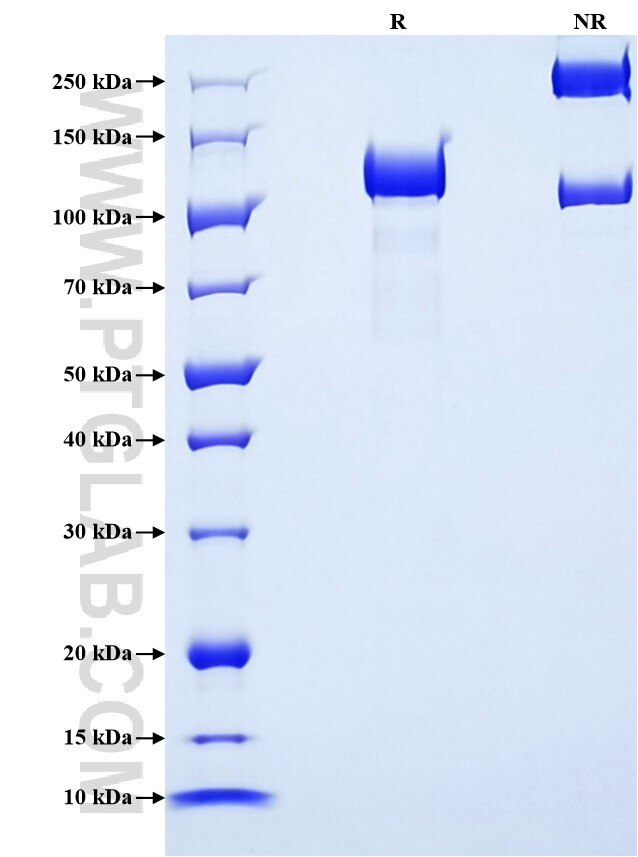Recombinant Human Complement C6 protein (rFc Tag)
Species
Human
Purity
>90 %, SDS-PAGE
Tag
rFc Tag
Activity
not tested
Cat no : Eg4529
Validation Data Gallery
Product Information
| Purity | >90 %, SDS-PAGE |
| Endotoxin | <0.1 EU/μg protein, LAL method |
| Activity |
Not tested |
| Expression | HEK293-derived Human Complement C6 protein Cys22-Ala934 (Accession# P13671) with a rabbit IgG Fc tag at the C-terminus. |
| GeneID | 729 |
| Accession | P13671 |
| PredictedSize | 128.7 kDa |
| SDS-PAGE | 120-130 kDa, reducing (R) conditions |
| Formulation | Lyophilized from 0.22 μm filtered solution in PBS, pH 7.4. Normally 5% trehalose and 5% mannitol are added as protectants before lyophilization. |
| Reconstitution | Briefly centrifuge the tube before opening. Reconstitute at 0.1-0.5 mg/mL in sterile water. |
| Storage Conditions |
It is recommended that the protein be aliquoted for optimal storage. Avoid repeated freeze-thaw cycles.
|
| Shipping | The product is shipped at ambient temperature. Upon receipt, store it immediately at the recommended temperature. |
Background
Complement C6 protein is part of the complement system and is a key component of the Membrane Attack Complex (MAC), which acts by forming pores in the plasma membrane of target cells in both natural and adaptive immune responses. The C6 protein plays a cytolytic role in the complement pathway and is involved in the immune response and cytolysis process. Together with other components of the complement cascade, it labels and removes pathogens and damaged cells. C6 proteins have been implicated in a variety of diseases, including meningitis and brucellosis. C6 complement deficiency prevents the development of diet-induced atherosclerosis. Drug development for C6 is currently underway.
References:
1. Karadadas E, et al. Clin Biochem. 2020;81:15-19. 2. Lin K, et al. Blood Adv. 2020;4(9):2049-2057.
